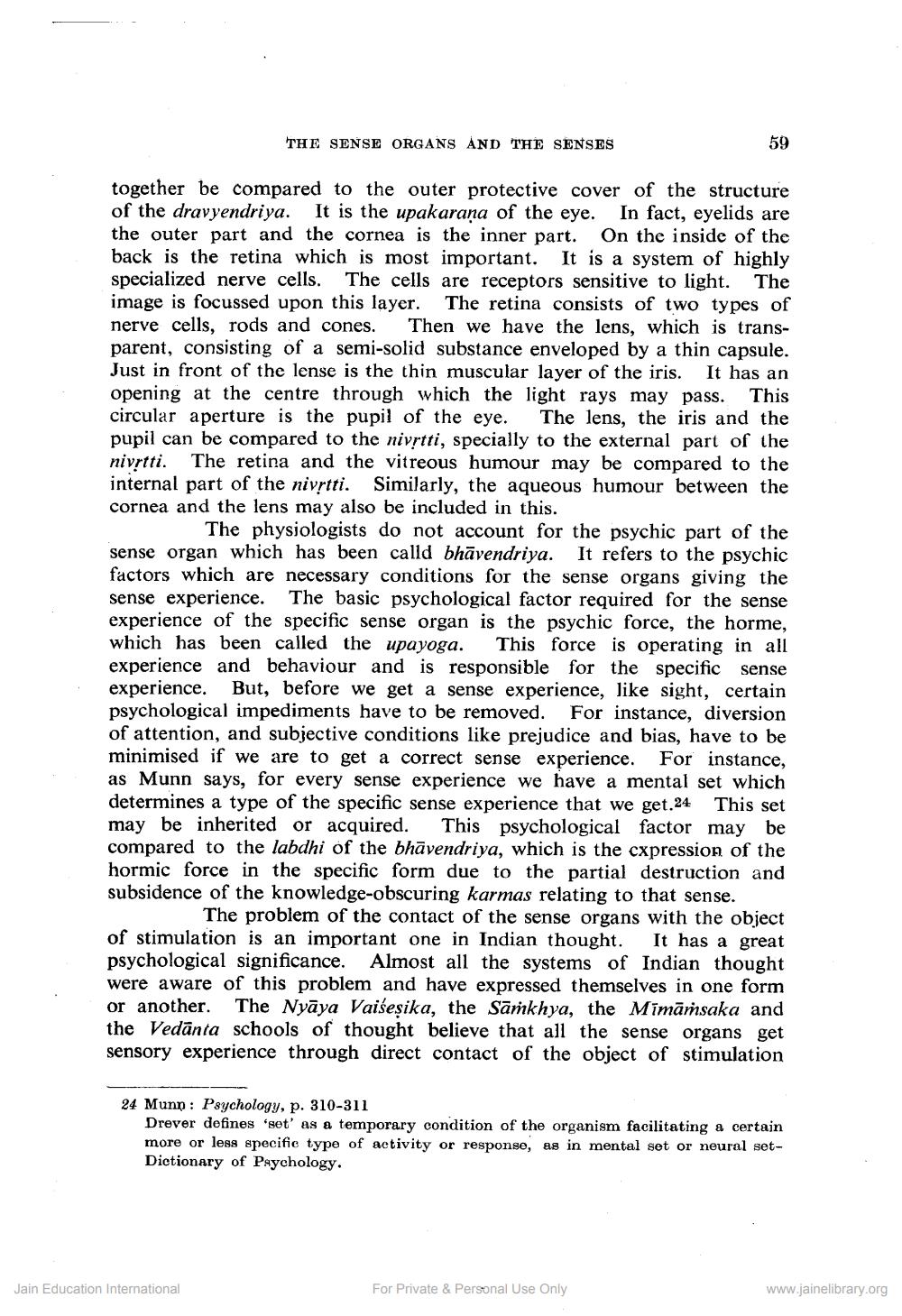________________
THE SENSE ORGANS AND THE SENSES
together be compared to the outer protective cover of the structure of the dravyendriya. It is the upakarana of the eye. In fact, eyelids are the outer part and the cornea is the inner part. On the inside of the back is the retina which is most important. It is a system of highly specialized nerve cells. The cells are receptors sensitive to light. The image is focussed upon this layer. The retina consists of two types of nerve cells, rods and cones. Then we have the lens, which is transparent, consisting of a semi-solid substance enveloped by a thin capsule. Just in front of the lense is the thin muscular layer of the iris. It has an opening at the centre through which the light rays may pass. This circular aperture is the pupil of the eye. The lens, the iris and the pupil can be compared to the nivṛtti, specially to the external part of the nivrtti. The retina and the vitreous humour may be compared to the internal part of the nivṛtti. Similarly, the aqueous humour between the cornea and the lens may also be included in this.
59
The physiologists do not account for the psychic part of the sense organ which has been calld bhavendriya. It refers to the psychic factors which are necessary conditions for the sense organs giving the sense experience. The basic psychological factor required for the sense experience of the specific sense organ is the psychic force, the horme, which has been called the upayoga. This force is operating in all experience and behaviour and is responsible for the specific sense experience. But, before we get a sense experience, like sight, certain psychological impediments have to be removed. For instance, diversion of attention, and subjective conditions like prejudice and bias, have to be minimised if we are to get a correct sense experience. For instance, as Munn says, for every sense experience we have a mental set which determines a type of the specific sense experience that we get.24 This set may be inherited or acquired. This psychological factor may be compared to the labdhi of the bhāvendriya, which is the cxpression of the hormic force in the specific form due to the partial destruction and subsidence of the knowledge-obscuring karmas relating to that sense. The problem of the contact of the sense organs with the object of stimulation is an important one in Indian thought. It has a great psychological significance. Almost all the systems of Indian thought were aware of this problem and have expressed themselves in one form or another. The Nyaya Vaiseṣika, the Samkhya, the Mimamsaka and the Vedanta schools of thought believe that all the sense organs get sensory experience through direct contact of the object of stimulation
Jain Education International
24 Munn Psychology, p. 310-311
Drever defines 'set' as a temporary condition of the organism facilitating a certain more or less specific type of activity or response, as in mental set or neural setDictionary of Psychology.
For Private & Personal Use Only
www.jainelibrary.org




